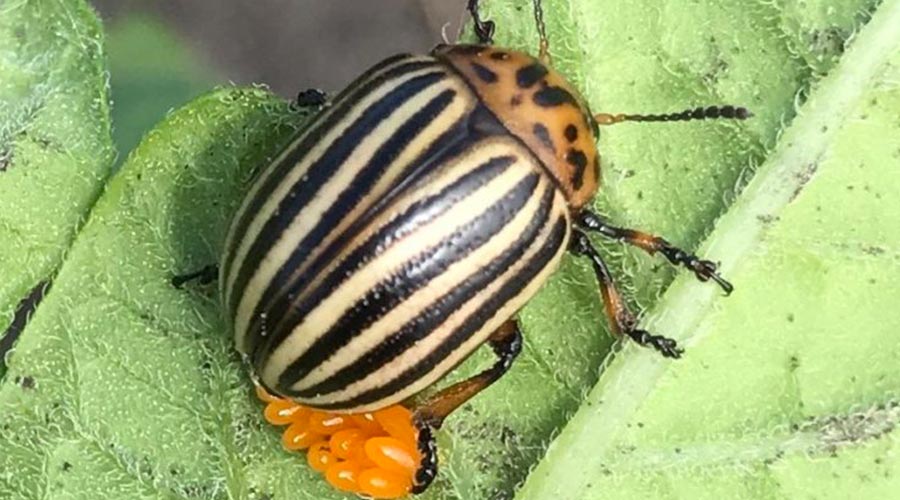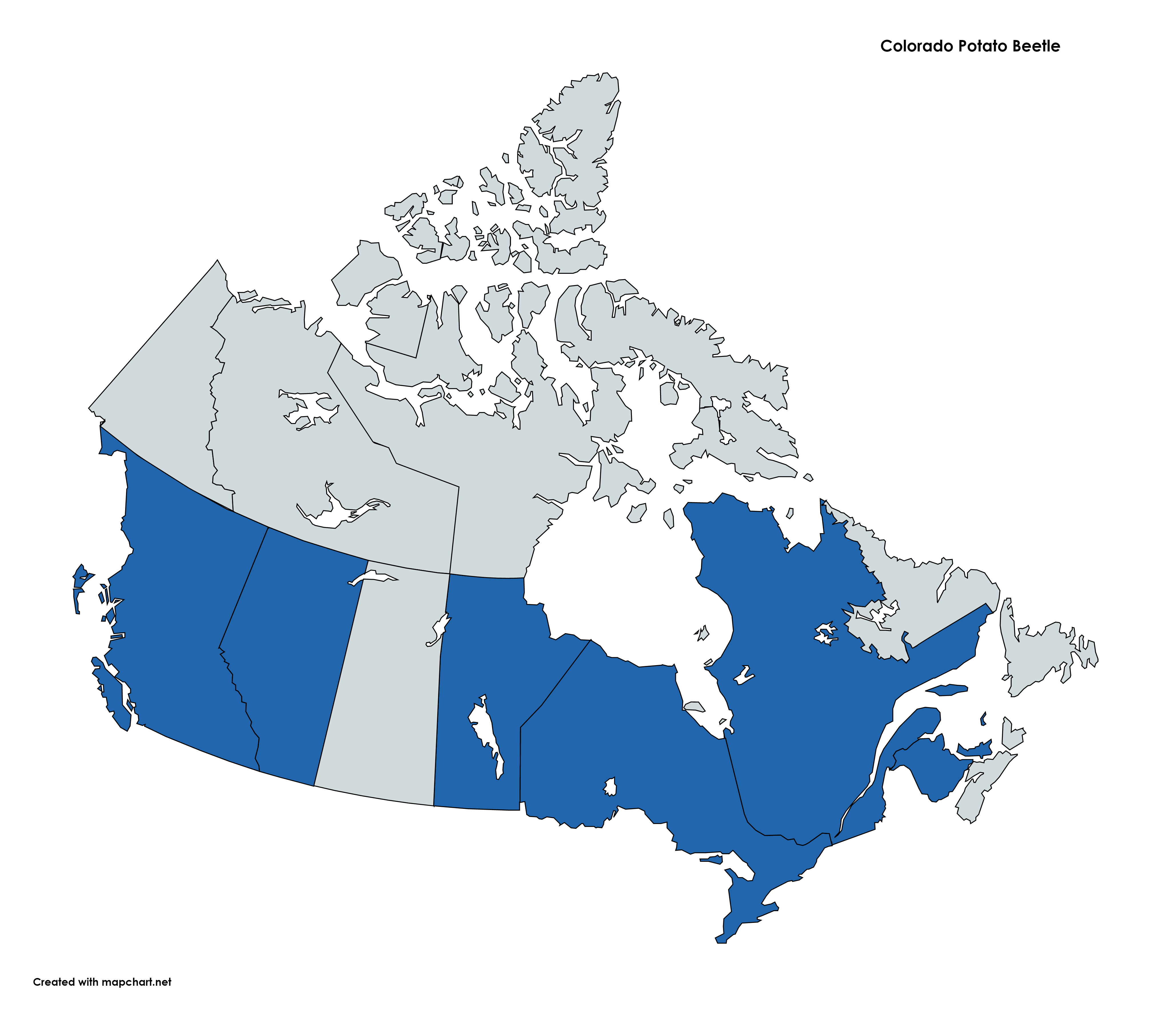
Photo credit: T. Shinners-Carnelley
Lead Researchers
Chandra Moffat & Ian Scott | Agriculture and Agri-Food Canada (AAFC), Summerland, BC & London, ON
Objectives
To reduce economic losses to potato in Canadian growing regions due to the Colorado potato beetle (CPB). Specifically, local susceptibility of CPB populations to several classes of insecticides will be determined through a national resistance-monitoring network, resistance management will be improved, the molecular basis of developing resistance will be better characterized, and novel extension tools to improve management practices will be developed.
To reduce economic losses to potato in Canadian growing regions due to the Colorado potato beetle (CPB). Specifically, local susceptibility of CPB populations to several classes of insecticides will be determined through a national resistance-monitoring network, resistance management will be improved, the molecular basis of developing resistance will be better characterized, and novel extension tools to improve management practices will be developed.
Early Outcomes of Research
Resistance testing was initiated in 2018 and continued in 2019.
Resistance Testing of 2019 CPB Populations
MB (9 populations): Over half of the populations showed resistance to at least one neonicotinoid (Group 4A), while another four populations showed reduced susceptibility. Only one population showed full susceptibility to the neonicotinoid Actara®. Six populations showed resistance to at least one diamide (Group 28), usually Verimark®. Four populations showed reduced susceptibility to the spinosyn (Group 5) Delegate™, while the remaining five were susceptible. Seven populations showed reduced susceptibility to Entrust® (Group 5) and one was resistant.
ON (6 populations): Three populations showed reduced susceptibility to the neonicotinoid (Group 4A) Actara®, one showed development of resistance, and two showed full susceptibility. For Titan® (Group 4A), two populations showed development of resistance, two showed reduced susceptibility, and two showed full susceptibility. Resistance to the diamides (Group 28) was found in three populations. In two cases, resistance was found to both Coragen® and Verimark® and one population each maintained full susceptibility to either Coragen® or Verimark® but not both insecticides. For the spinosyns (Group 5), one population showed development of resistance to Entrust®, while three populations showed reduced susceptibility and two showed full susceptibility. Four populations were fully susceptible to Delegate™ and two showed reduced susceptibility.
QC (9 populations): Resistance was only detected in one population, to the spinosyn (Group 5) Entrust®. The remaining populations showed the development of reduced susceptibility to Entrust® and most showed reduced susceptibility to Delegate™ as well. Most populations showed reduced susceptibility to the neonicotinoids (Group 4A), but no resistance was detected. For the diamides (Group 28), roughly equal numbers of populations showed full susceptibility as those which showed reduced susceptibility.
NB (4 populations): Two populations were fully susceptible to all insecticides tested, while the other two showed reduced susceptibility to the neonicotinoid (Group 4A) Actara® and the spinosyn (Group 5) Entrust®. One population showed reduced susceptibility to Delegate™.
PE (3 populations): One population tested showed full susceptibility to all insecticides tested. Another showed reduced susceptibility to both neonicotinoids (Group 4A) and the other showed reduced susceptibility to at least one insecticide in each class.
AB (3 populations): Results are not reported for 2019, but for 2018 populations, good susceptibility to all classes of insecticides tested was determined.
Develop an interactive online mapping tool for growers
A resistance mapping tool is under development using data from both 2018 and 2019 surveys, and is currently available offline for research purposes with the planned initial releases to project partners by 2022. The Web Mapping Application will provide growers/industry the ability to access and obtain detailed results from the susceptibility survey in a form that is accessible and easy-to-navigate.
Identify molecular signatures of insecticide resistance
Molecular diagnostic testing of CPB from populations submitted in 2018 and 2019 was initiated. The populations with highest priority for testing were those exhibiting strong resistance activity to spinosyn (Group 5) and diamide (Group 28) insecticides. RNA was extracted from insect tissues from resistant and sensitive populations and submitted to a sequencing facility. Bioinformatics analysis will be initiated to compare the gene expression profiles characteristic of each population to identify genes whose expression correlates with the presence of insecticide resistance.
Key Messages for Growers
- Results from the 2018 and 2019 field seasons demonstrate strong regional patterns in the development of resistance in CPB populations, with different classes of insecticides showing regional variation in efficacy.
- The Web Mapping Application will provide growers/industry the ability to access and obtain detailed results from the susceptibility survey in a form that is accessible and easy-to-navigate.
- Molecular diagnostic testing of CPB from populations is ongoing to identify genes whose expression correlates with the presence of insecticide resistance.

